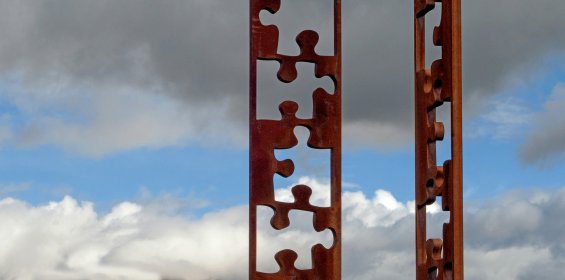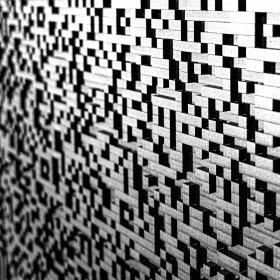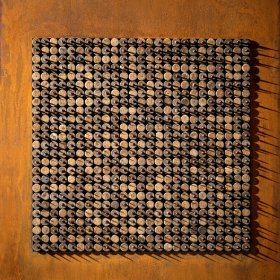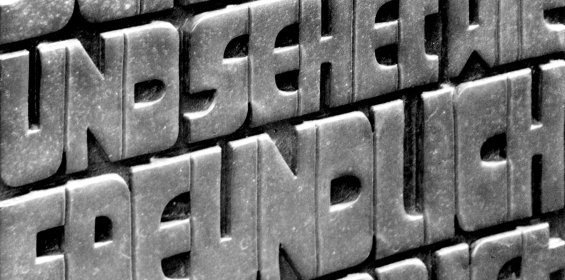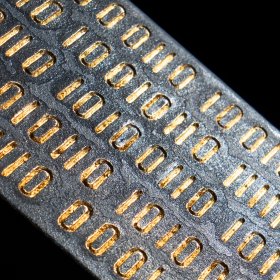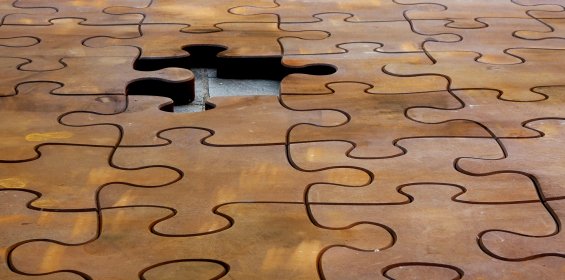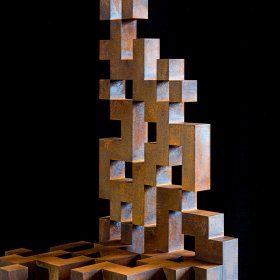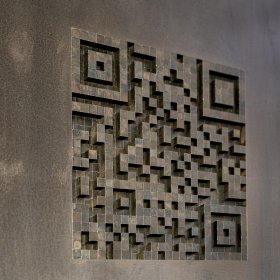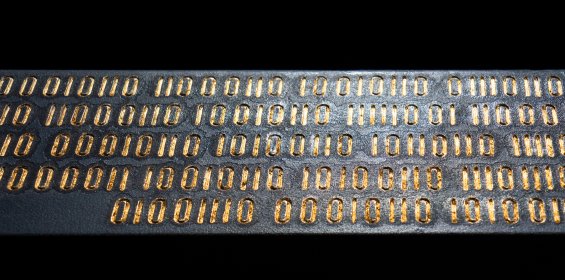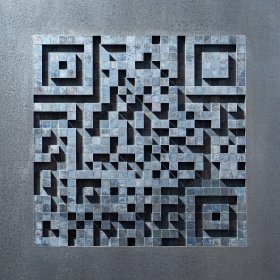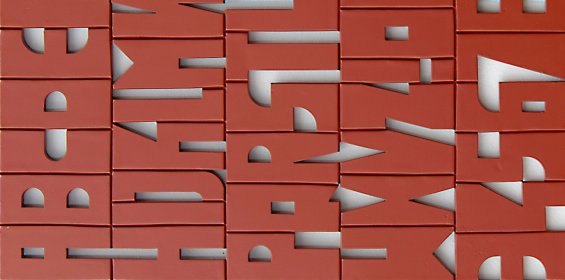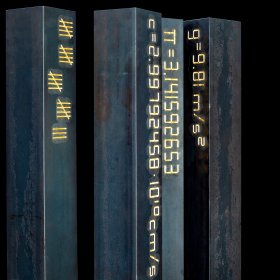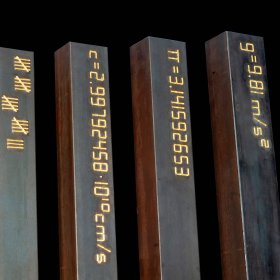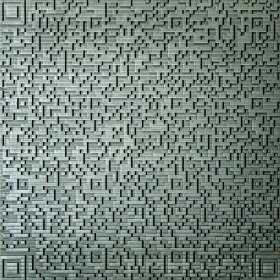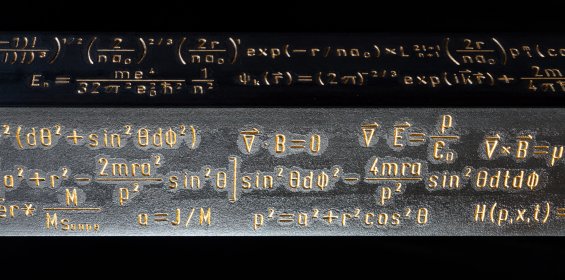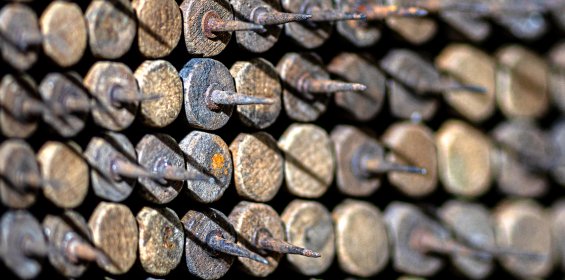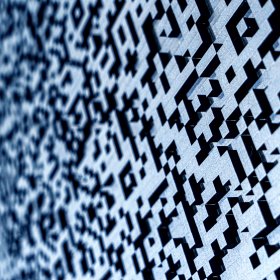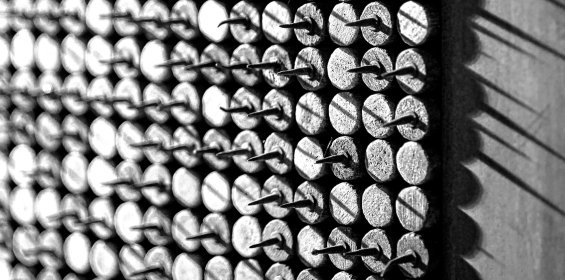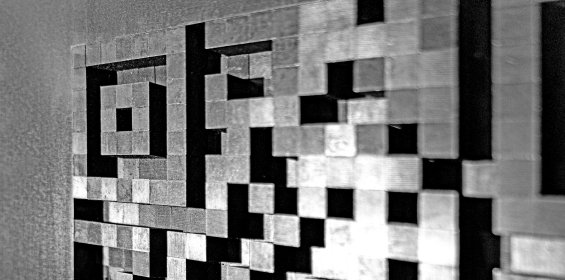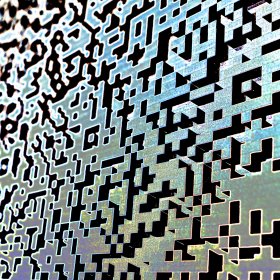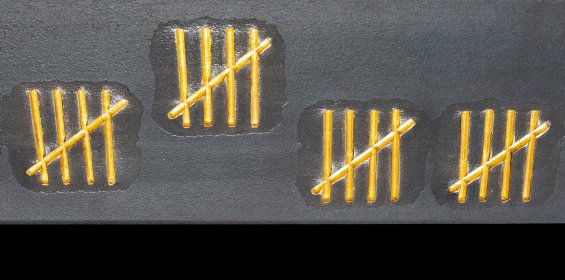The Poetry of Data
Steel is hard and durable. And it is not a material that would readily be associated with the ostensibly immaterial world of digital data. But data also needs a material carrier in order to be stored. How long this works, how permanently a memory stick can preserve data, depends on the one hand on the hardware, and on the other hand on the fact that computer programs and system software often rapidly become obsolete.
And data consumption also means energy consumption, which entails the exploitation of natural resources just like the production of silicon chips does.
Wolf’s steel “Data Sculptures” ultimately refer to this state of affairs; and perhaps they will be among the few material testimonies of our time to be handed down to posterity. Future researchers will perhaps also attempt to decipher these messages, just like today’s classical scholars work on deciphering signs that have survived on prehistoric stelae for tens of thousands of years.
Already now, we are unable to directly read what is stored in the visible structure of digital codes. Georg-Friedrich Wolf, for example, does not know what exactly is embedded in the QR code of his own coronavirus vaccination, even if he has immortalised the form in sculpture. And although he can enter the access code for his own data storage in the “cloud”, we cannot decipher how it actually opens up. And what is concealed behind the QR code which has been translated into a structure of spikey nail tips? What the QR code of a boarding pass is based on is not the “message” that Wolf desires to convey with his artwork. The nails are far more intended to evoke associations with the torture device used in Franz Kafka’s short story “In the Penal Colony” to carve the delinquent’s condemnation directly into his body. This image takes the physical presence of writing to the extreme.
However, as the literary scholar and media theorist Friedrich Kittler writes: “The bulk of written texts [...] do not exist anymore in perceivable time and space but in a computer memory’s transistor cells.“1 In his humorous “Data Poetry”, the Austrian writer and computer scientist Jörg Piringer reflects on the fact that the majority of text-based communication today is produced and read not by humans, but by machines.
Georg-Friedrich Wolf’s “Poetry of Data” transfers what machines generate into visible and physically tangible compositions that we can enjoy in the same way mathematicians enjoy the beauty of formulas. Wolf has inscribed the beauty of the world formula in his “Formelstele”, formed like in an over-sized memory stick made to outlast earthquakes and nuclear catastrophes.
Technische Schriften, Leipzig 1993, pp. 225-242, here p. 225.

